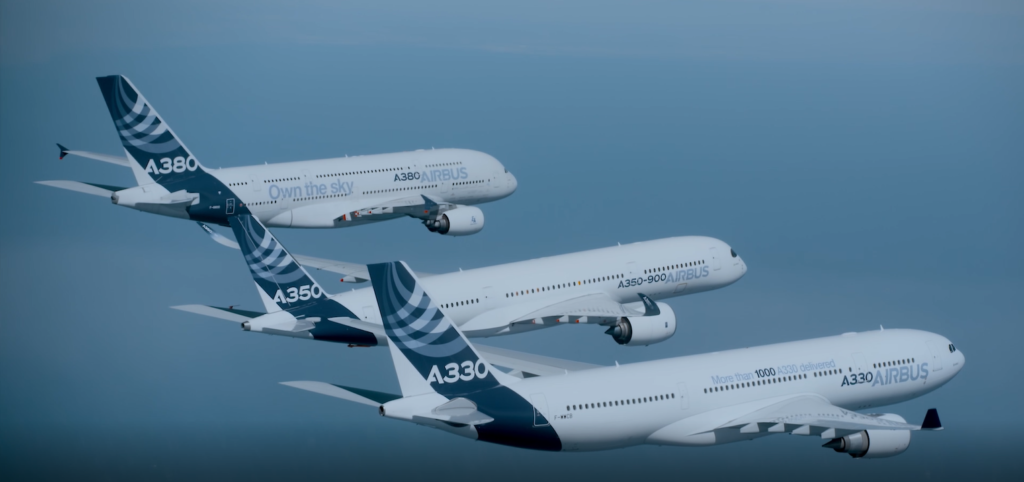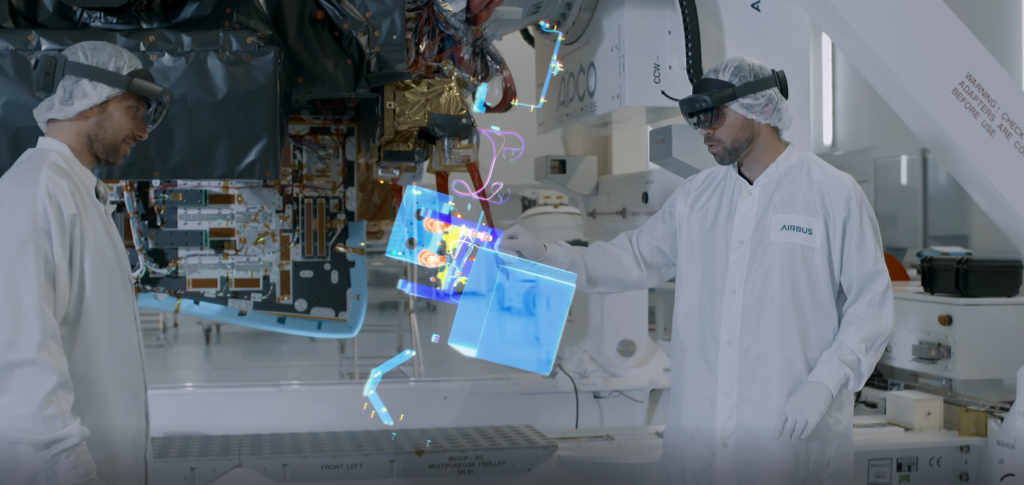Airbus reaches new heights with the help of Microsoft mixed reality technology
- пятница, 28 июня 2019 г. в 00:12:23
It took Airbus 40 years to build its first 10,000 aircraft. Over the next 20 years, the aerospace giant aims to build 20,000 more—aformidable challenge that will require cutting-edge innovation.
Holographic technology from Microsoft, known as “mixed reality” because it combines physical and digital worlds, will be key to helping Airbus reach this ambitious goal.

“Our challenge in the coming years is to manufacture more aircraft faster, and for that we need to enable our workers to be much better equipped and to be much more effective in what they do. We need to raise the bar,” says Jean-Brice Dumont, executive vice president of engineering at Airbus, which manufactures aircraft, helicopters, satellites and launch vehicles.

“To face this challenge, we intend to make an intense use of mixed reality and that’s why we’ve partnered with Microsoft,” Dumont says.
Microsoft’s mixed reality technology can be used to help Airbus production workers access information and instructions while their hands are occupied, for example. It can also facilitate training without tying up expensive equipment or even requiring the trainee to travel to where the equipment is located. This is just the beginning: Airbus has identified more than 300 use cases for mixed reality.
Airbus has been exploring mixed reality for several years, and started working with Microsoft on mixed reality solutions four years ago. Those solutions will get a boost with the advanced capabilities of HoloLens 2, Microsoft’s latest-generation mixed reality headset, and a growing portfolio of mixed reality applications and services from Microsoft and industry partners.
What is mixed reality?
Mixed reality takes digital information beyond two-dimensional screens to a three-dimensional experience by using holograms, which are images made of light and sound.
Microsoft’s HoloLens headset is a culmination of breakthroughs in artificial intelligence (AI), hardware design and mixed reality development. It allows people to interact with holograms in physical space, meaning that they can view and manipulate holographic images on their own in the air or in combination with real physical objects.
The recent release of HoloLens 2 takes the mixed reality experience a step further, allowing users to manipulate holograms the same way they would handle physical objects. The headset also offers eye tracking that can sense when a user’s eyes land on a particular location and produce relevant digital information, as well as automatic scrolling as the user reads. Users can log in via iris recognition, making sharing among multiple people easy and secure.

Putting mixed reality to work
Airbus has seen impressive results in its trials and deployments of Microsoft’s mixed reality technology in training, design and manufacturing.
“Mixed reality can help us to increase quality, safety and security,” Dumont says. “The level of human error is significantly reduced, and in aerospace, increased quality is increased safety—and needless to say, security goes with that.”
Mixed reality allows aerospace trainees to learn in an immersive virtual environment without the need for an actual physical aircraft or parts. This 3D environment can offer features that real-life training cannot, such as the ability to view elements in three dimensions from any angle.
HoloLens helps Airbus designers virtually test their designs to see if they are ready for manufacture. Mixed reality speeds up the process substantially, decreasing the time spent by 80 percent.
Mixed reality technology can also help workers on the production line access crucial information while keeping their hands free. Digital information, such as instructions or diagrams, can be overlaid on a real piece of machinery to aid in complex or hard-to-reach tasks. These kinds of mixed-reality solutions have allowed Airbus to cut manufacturing time by a third while improving quality.
Mixed reality empowers employees to execute their jobs in the most efficient and ergonomic way possible, and this contributes directly to performance improvements, according to Barbara Bergmeier, who is head of operations at Airbus Defense and Space.
“By having the right information at the right time in hands free mode, not only does quality increase, but also safety, and this is what we are looking for. Quality without consideration of the well-being of our workers is not possible,” she says.

Working together to evolve mixed reality
Not only is Airbus creating solutions for its workforce, but it has built off-the-shelf solutions for its customers, so they can also benefit from Airbus’ expertise in building mixed reality solutions. Starting at the Paris Air Show, Airbus will be selling these in partnership with Microsoft on HoloLens 2.
“HoloLens 2 was born from the inspiration that it be designed for the customer, by the customer,” says Alex Kipman, technical fellow in Microsoft’s Cloud and AI group. “Airbus has long been a strategic partner in building the future of mixed reality solutions for an industrial environment and we have learned a lot from them. We are thrilled to continue our partnership as we embark on this next era of computing, the era of mixed reality and artificial intelligence.”
The first new solution offered under this partnership is a mixed reality training program first released with Japan Airlines (JAL). It helps maintenance operators and cabin crews learn in a 3D holographic environment and access instructions, heads-up and hands-free, while on the job.
In addition, Airbus will launch a collaborative map solution that allows participants from the defense and aerospace fields to virtually connect, quickly share space data and interact with complex virtual environments to plan and prepare ahead of missions.
Airbus is working on requests from other customers for mixed reality maintenance, training and remote collaboration solutions.

Leading in real life
Airbus’ collaboration with Microsoft on mixed reality goes beyond helping the company reach its internal goals. Such technological innovation is crucial to Airbus’ larger objective to become a world leader in digital services for the aerospace industry.
“We are very optimistic about this future collaboration with Microsoft based off what we’ve done in the last four years,” Dumont says. “This is really a way for us to lead our digital transformation. It’s multifold, but the use of mixed reality and HoloLens 2 are one of the key assets for Airbus in the future.”